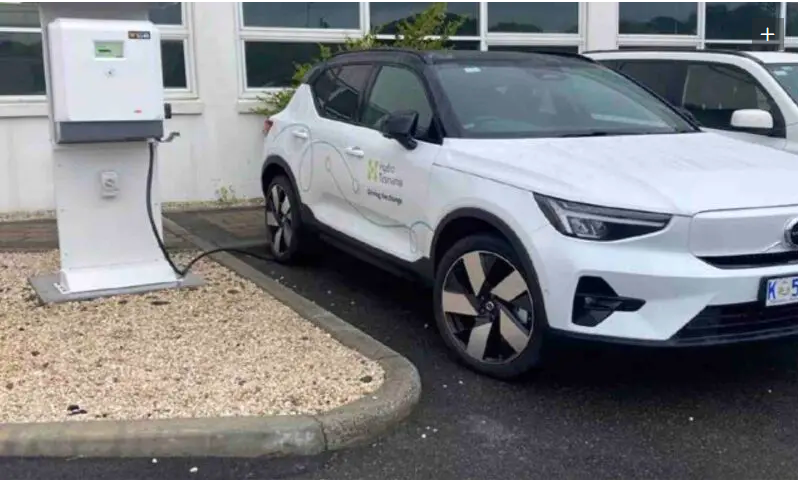
The state owned utility Hydro Tasmania and its associated companies have pledged to replace their diesel passenger vehicle fleet with 130 electric vehicles by 2030 as part of a net zero plan.
The companies have also committed to building their own network of charging stations around the state.
“Hydro Tasmania has a proud history of sustainability, and our renewable energy is helping the state achieve its own net zero targets,” said Hydro Tasmania CEO, Ian Brooksbank.
“Committing to our own journey towards net zero emissions is the next step in our story. Our action plan is redefining the way we generate, distribute, and consume electricity, so we can address the impacts of climate change and help keep our planet healthy for future generations.”
The company has already bought six new electric vehicles in 2023 – a mixture of Volvo XC40s (pictured above) and Tesla Model Ys, and even a newly arrived Mercedes e-Sprinter van.
It has also installed four charging stations at locations around the state. The electrification plan for the company’s vehicles doesn’t yet include heavy vehicles and machinery, although this may change as more becomes available.
“We’re going to try and be as quick and aggressive as we can, but we’re also trying to be realistic about the availability of suitable vehicles,” Cameron McCulloch, the head of asset and environment strategy and risk for Hydro Tasmania told TheDriven.
“Australia seems to be one of the toughest places in the world to get electrification of heavy trucks, machinery.”
Heavy electric vehicles are slowly making their way onto the market, but can be difficult to purchase with supply chain delays.
Hydro Tasmania also has two publicly available EV chargers – one at the Waddamana Power Station Museum and one at Pedder Wilderness Lodge. It also has a number of other chargers for employee use.
In a report titled ‘Towards Net Zero’ Hydro Tasmania and its subsidiaries Momentum Energy and Entura laid out their plan to achieve net zero scope 1 and scope 2 emissions by halfway through 2025.
In 2020, 2021 and 2022, the scope 1 and scope 2 emissions for the organisations was more than 50,000 tonnes of CO2 equivalent a year. This dropped substantially from 250,000 in 2019 and over 400,000 in 2016.
To lower their emissions further, the report noted the operation of the 1.5 MW King Island Solar Farm to boost the share of renewables from the current level of 65 per cent, and making the switch to their 130 diesel passenger vehicles to electric by 2030. The remainder would be offset.
The amount of carbon credits required for the company to get to net zero is not yet confirmed, as droughts, outages or other extreme events could all effect the number of credits required.
“We plan to go to market very soon for offsets and we’ll be weighing up where we roughly think they’ll be and building in some contingency,” McCulloch says.
“That’s our last resort of what we want to do to get to net zero, but it’s the reality of being a low emissions organization.”